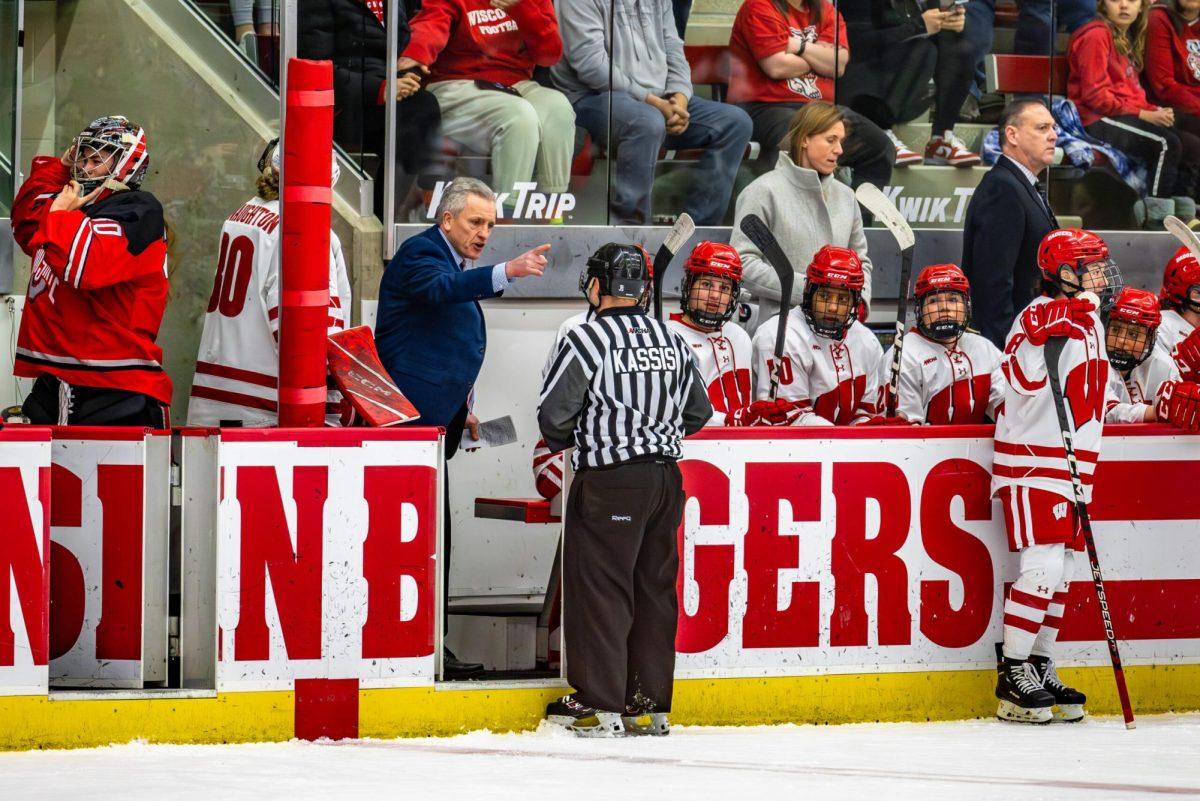Picture Bo Ryan charging his freshmen $50 a head before they joined the UW basketball team.
Picture the women’s basketball starting five piling into Jessie Stomski’s Toyota to drive themselves to a road game in Iowa.
Picture the Badger football team surrendering its Rose Bowl bid to Minnesota because the players couldn’t scrape together enough money to pay for plane tickets.
These are all loopy scenarios, but for Sarah Baker-Siroty, player-president of the UW women’s lacrosse team, situations like these arise all the time.
Women’s lacrosse at UW qualifies as a club sport, which means the team is still trying to persuade the university to grant it varsity status. So instead of receiving full UW funding for things like coaches, equipment and transportation, Baker-Siroty got only $800 from the university last year.
For some perspective, consider some of the team’s costs: Fifty bucks for a uniform (there are 25-35 players, but Baker-Siroty said the team could only afford 20 uniforms). Forty bucks for an average pair of padded gloves (to guard against stick slashes). Eighty-five dollars for referees per game. Three hundred dollars to enter a three-game tournament. Van rentals. Gasoline purchases. And it can cost the team almost $3,000 to hold its own eight- or nine-team tournament.
All these expenses make the university’s $800 contribution dry up faster than a gambler’s bank account. The team charges its members $50 per year, but that only brings in about an extra $1,000. But what the team lacks in funds, it compensates for in dedication.
“We drive ourselves to almost all of our road games,” Baker-Siroty said. “I must have put, like, 10,000 miles on my car last year.”
Because of its limited yearly grant, the team finds creative ways to earn money. Baker-Siroty remembers the T-shirt-and-visor sale, and the girl who worked for Toppers and persuaded her boss to donate 20 pizzas to UW’s tournament. And most members of the team write “beg letters” home, asking Mom and Pop for contributions (OK, so the ideas aren’t all creative).
The team only gets $800 a year because UW gives the club sports program only $34,000 for all 33 club sports, according to club sports director Kirby Buss. Each sport’s president enters an annual expense report, which estimates a team’s annual expenses for things like traveling, facility rental and any new equipment, and the university decides how much money each sport deserves.
However, Baker-Siroty says that the team regularly “exaggerates” its expense report. The team’s treasurer, Anne Oorbeck, believes most club sports ask for more money than they actually need. They have to, she says, because the university almost always deflates a team’s request before giving it money.
“You know that it will get cut down, so you ask for more,” Oorbeck said.
By rule, the university can provide 33 percent of a club team’s total estimated expenses, but many club sports fall well short of that figure. Last year’s expense reports show that men’s lacrosse got only about 19 percent of its requested funding. The most handsomely endowed club sport, non-varsity women’s ice hockey, receives $5,100, yet Buss said that didn’t even cover the costs of ice-rink rental, let alone equipment and travel expenses.
The members of the women’s lacrosse team sail in the same boat. Last year the $800 covered less than 20 percent of the team’s expense request of $4,205. As a result, the team didn’t have enough money to pay for a trip to the Women’s Collegiate Lacrosse League playoffs in Toledo, Ohio. Even though UW finished with the best record in its division, it had to hand over its playoff berth to the second-place team, Bethel College.
You’d think that fiascos like these would make the choice between going varsity and staying club easier than a P.E. final exam. However, Baker-Siroty says she speaks for most of the team in pointing out that the decision involves complications that most observers don’t see.
“I think that my ultimate hope would be to see women’s lacrosse go varsity,” Baker-Siroty said. “However, there are some advantages to staying club.”
For one thing, Baker-Siroty says the players enjoy the freedoms of being a club team. The team’s player-coach, Sara Liljedahl, holds practices on a make-it-when-you-can basis. And it’s definitely more relaxing to try out for a team that won’t cut you no matter how poorly you play.
Also, Baker-Siroty says a UW bylaw precludes any group of students from creating a club team that plays the same sport as a varsity team. However, the university can’t revoke a club team’s charter if the team existed prior to the varsity upgrade; the rule applies only to new teams. Baker-Siroty listed this rule as one of best arguments for remaining a club team.
Here’s how Baker-Siroty envisions the situation. If women’s lacrosse gained varsity status, she thinks UW would promote most of the team’s current members to varsity, leaving few or none to hold the current club team together. The club team would disband.
Then, after the team’s first season, a “fluctuation year,” similar to a new Olympic sport’s exhibition year, the university would replace many of the former club members with nationally recruited scholarship athletes. Thanks to the arcane rule, any club members left behind by the varsity team would be unable to form a new club team. Women’s lacrosse as a UW club sport would disappear.
Women’s lacrosse actually had a shot at going varsity back in 1998, when all non-varsity sports got chances to plead their cases for varsity status. Ultimately, women’s hockey won the prize (it still exists as a club sport because the original team never disbanded). That year, though, Jaci Hausman, the former director of UW club sports, promised then-team president Rachel Moore that women’s lacrosse would receive varsity status by last spring.
“They told us that in three years we were going to go varsity,” Baker-Siroty said. “That was in spring of 1998.”
“We should have been [varsity],” she added.
Baker-Siroty traces the coming and going of the 1998 promise to the turnover of Hausman’s position, which has seen two club sports directors since that spring. Somewhere, somebody misplaced and forgot about the women’s lacrosse promise, and along with it the chances of women’s lacrosse going varsity in the near future.
But Baker-Siroty isn’t worried. She knows that, with or without a varsity label, her teammates will stay dedicated to playing lacrosse. Even as she exits a State Street coffee shop, a girl hurries up to about lacrosse practice. The girl’s smile straightens as she learns that the team probably won’t practice again until the spring.
“We all love to play,” Baker-Siroty said. “Even if the university took away the $800, we’d still find a way to play.”
For now the team will probably pack up its equipment until the spring season, the serious months for UW lacrosse. Even though the university sponsors women’s lacrosse, the team members can’t use UW’s McClain Center indoor football fields for winter practices unless they pay $200 per hour, too steep a price for virtually any club sport. So, they’ll probably just wait until the snow melts.
Actually, the university has offered an alternative practice location, the UW Stock Pavilion. Yes, the same building whose floor lies beneath a thick layer of dirt and dung. The same building whose walls house generations of cattle stench.
Baker-Siroty says she’ll probably accept the offer, if her teammates can dodge the cow pies.
Now that’s dedication.













